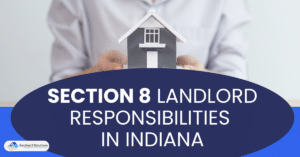Montana landlords and tenants should prepare early, pay attention to details, and retain documents for Section 8 Housing inspections. Before the inspection, make sure everything works, including smoke and carbon monoxide detectors. Keeping a journal of repairs and upkeep shows the inspector that the property is being maintained and up to code.
In this article, we will provide you with tips for Section 8 Housing inspections in Montana, covering everything from preparing for the inspection to addressing common issues found during inspections.

Understanding Section 8 Housing Inspections
The Section 8 Housing program provides affordable housing options for low-income families in Montana, but in order to participate, both landlords and tenants must pass inspections. These inspections are important because they ensure that the properties meet safety and quality standards and that tenants are living in healthy and habitable conditions.
Section 8 Housing inspections can take several forms. Pre-tenant inspections guarantee that a property fulfills minimal housing quality criteria. Annual inspections assure property maintenance and program compliance. Complaint-based inspections address tenant concerns regarding property maintenance and safety.
Section 8 landlords and tenants must understand inspection kinds and reasons. Both parties can meet program requirements and keep tenants safe and healthy by knowing what to expect and how to prepare.

Preparing for the Inspection
Preparing for a Section 8 Housing inspection is essential for both landlords and tenants. By doing so, they can ensure that the property meets all program requirements and passes the inspection with ease. Here are some tips to help prepare for the inspection:
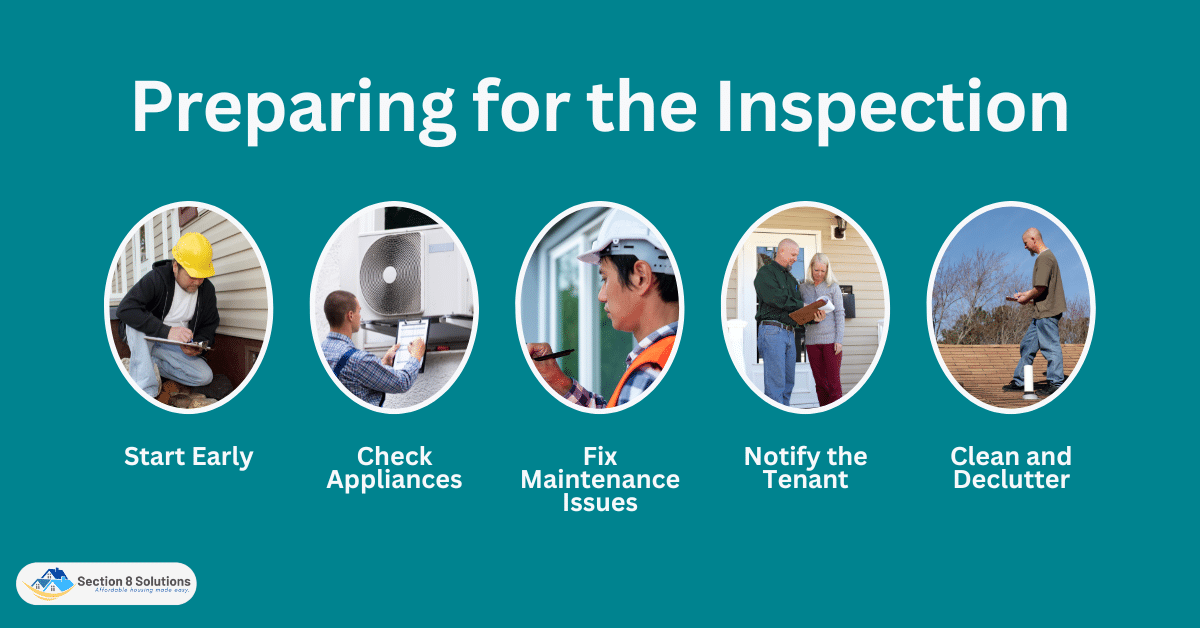
1. Start Early
Section 8 Housing inspections require early preparation. Preparing for the inspection might be daunting. By starting early, landlords and tenants may prepare for the inspection methodically and on schedule.
Start early since repairs and maintenance require time. A plumber may take days to fix a plumbing leak. You may not have time to correct the issue before the inspection if you wait.
2. Check Appliances
Preparing for a Section 8 Housing inspection requires a thorough examination of all of the household appliances. The tenant is responsible for ensuring that all of the property’s appliances are in proper operating order and comply with all applicable safety standards. Before the inspection can take place, any appliances that are not operating as they should be rectified and made ready for use.
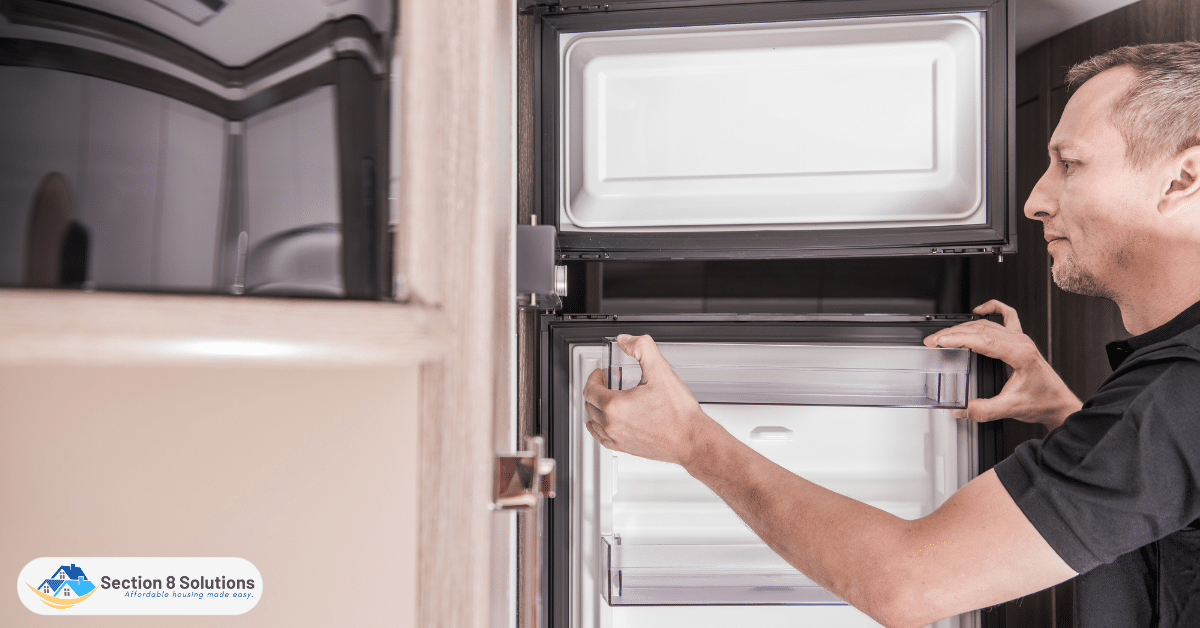
3. Fix Maintenance Issues
Some common maintenance issues that need to be addressed include leaks, broken windows, and faulty electrical systems. Leaks can cause water damage and mold growth, which can be hazardous to health. Broken windows can be a safety hazard, especially if they are located in a child’s bedroom or play area. Faulty electrical systems can also pose a safety risk and can potentially lead to a fire.
4. Notify the Tenant
Notifying the tenant of the inspection a sufficient amount of time in advance is an essential stage in the process of getting ready for a Section 8 Housing inspection. It offers them sufficient time to prepare their home for the inspection, which is an important step that can assist ensure that everything goes smoothly during the inspection. The tenant should be notified at least two weeks before the scheduled inspection by the landlord. Landlords should make this a priority.

5. Clean and Declutter
To pass a home inspection for Section 8 Housing, it is necessary to keep the home clean and organized. Clear away any excess clutter, make sure that all surfaces are clean, and deal with any problems including insects or mold if they arise.
These recommendations can help landlords and tenants prepare for Section 8 Housing inspections and ensure compliance. With adequate planning, the inspection can be passed to assure tenant safety and health.
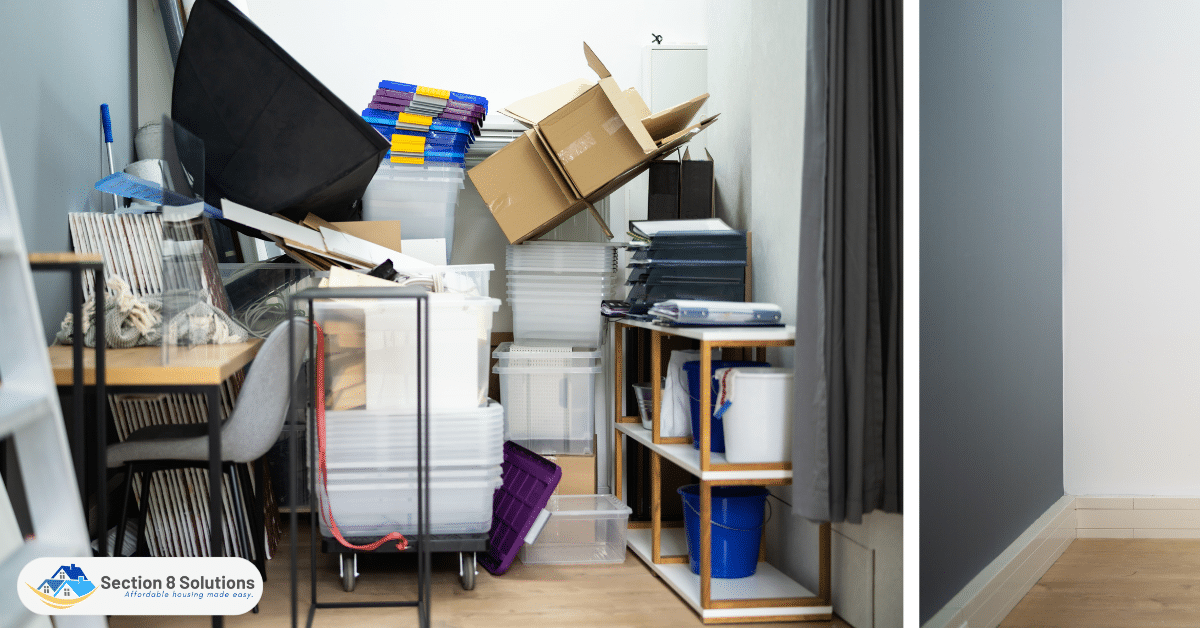
Common Issues Found During Inspections
Montana Section 8 Housing inspections ensure low-income households have safe, habitable housing. These inspections often find common faults that need to be fixed quickly to keep renters safe and comfortable. This section discusses Montana’s most prevalent Section 8 Housing inspection difficulties and offers solutions.
- Electrical hazards – Outdated electrical panels, faulty wiring, or improperly installed outlets can all pose a risk of fire and electrical shock.
- Pest infestations – Rodents or insects can compromise the health and safety of tenants, and signs of infestation such as droppings or damage to walls and floors are typically looked for during inspections.
- Structural issues – Leaks, cracks in the foundation, or damage to the roof can all compromise the safety and habitability of the property.
- Plumbing issues – Leaky faucets or pipes, blocked drains, and faulty water heaters can all pose a threat to the health and safety of tenants.
- Heating and cooling issues – Inadequate heating or cooling systems can make living conditions uncomfortable and compromise the health and safety of tenants.
- Safety hazards – Broken windows, loose handrails, and non-functioning smoke detectors are all safety hazards that need to be addressed.
- Sanitation issues – Lack of proper sanitation facilities, such as toilets and showers, can pose health risks and lead to unsanitary living conditions.
It is important to address these common issues promptly to ensure that the property meets the required standards and provides a safe and habitable living environment for tenants.

Tips for Landlords Participating in Section 8 Housing
Participating in the Section 8 Housing program requires landlords to adhere to certain rules and regulations to ensure the safety and habitability of the properties they rent out to low-income families. Here are some tips for landlords participating in the Section 8 Housing program in Montana:
- Keep a record of repairs and maintenance – Keeping a record of repairs and maintenance can help demonstrate that the property meets the required standards and provide evidence in case of disputes.
- Respond promptly to tenant complaints – Landlords should address tenant complaints promptly and document the steps taken to resolve any issues.
- Maintain open communication with tenants – Maintaining open communication with tenants can help prevent issues from arising and build a positive relationship.
- Understand the appeals process – In case of a failed inspection, landlords should understand the appeals process and the steps needed to file an appeal.
- Take corrective action promptly – If corrective action is needed, landlords should take immediate steps to address any issues and ensure that the property meets the required standards.
By following these tips, landlords can ensure that they provide safe and habitable housing to low-income families participating in the Section 8 Housing program in Montana.

Tips for Tenants Participating in Section 8 Housing
Tenants participating in the Section 8 Housing program have certain responsibilities to maintain the properties they rent and ensure that they meet the required standards for safety and habitability. Here are some tips for tenants participating in the Section 8 Housing program in Montana:
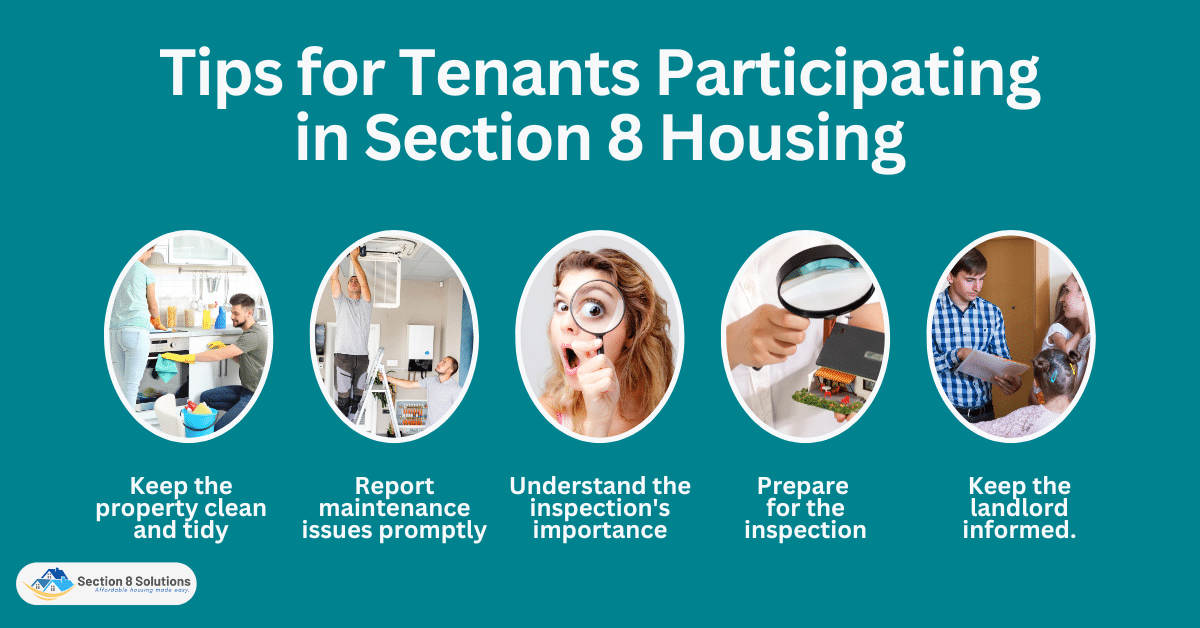
- Keep the property clean and tidy – Tenants should maintain a clean and tidy home to help ensure a successful inspection and prevent issues from arising.
- Report maintenance issues promptly – Tenants should report any maintenance issues, such as leaks, faulty appliances, or pest infestations, as soon as possible to their landlord or property manager.
- Understand the importance of the inspection – Tenants should understand the importance of the inspection and its role in ensuring that the property is safe and habitable.
- Prepare for the inspection – Tenants should prepare for the inspection by ensuring that the property is in good condition, addressing any maintenance issues, and cleaning the home.
- Maintain open communication with the landlord – Tenants should maintain open communication with their landlord or property manager and report any issues or concerns promptly.
By following these tips, tenants can help ensure that the properties they rent meet the required standards and provide safe and habitable housing for themselves and their families.
Conclusion
Finally, Montana landlords and tenants must pass Section 8 Housing inspections. Landlords and tenants can pass inspections and comply with program requirements by understanding inspections, planning in advance, addressing common issues, and keeping a record of repairs and maintenance.
Remember, Section 8 Housing provides much-needed assistance for low-income families, and maintaining the properties is a shared responsibility. By working together, we can help ensure that everyone has access to safe and affordable housing.





